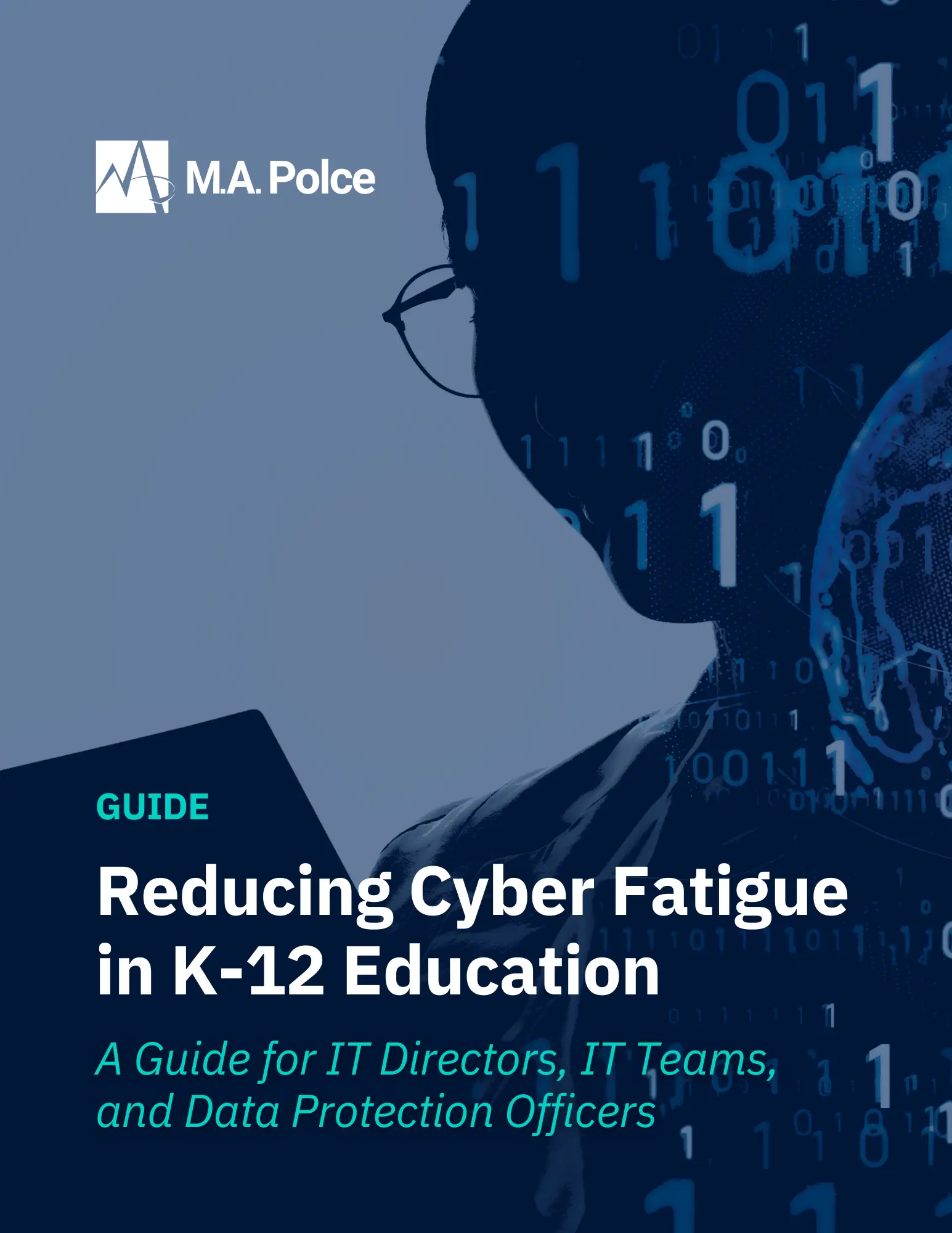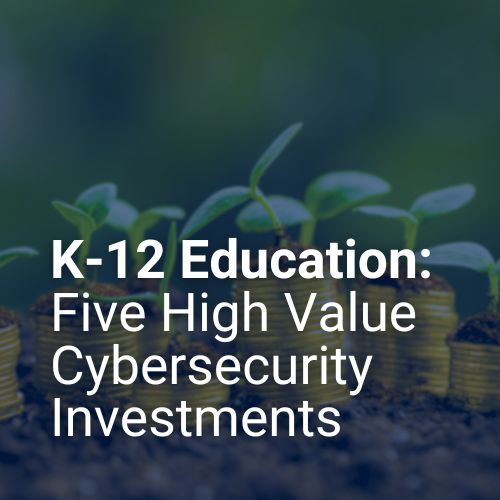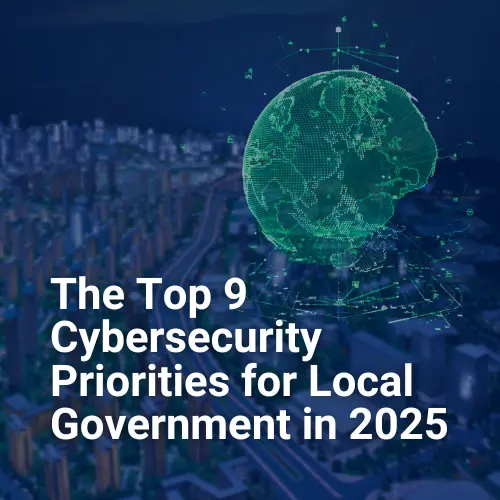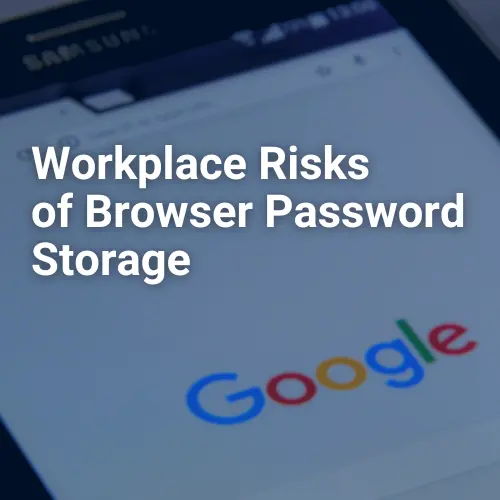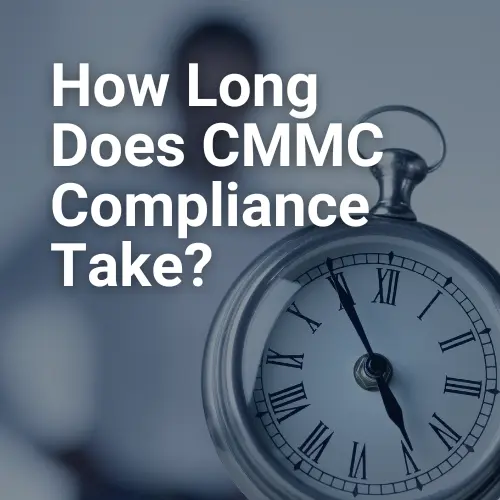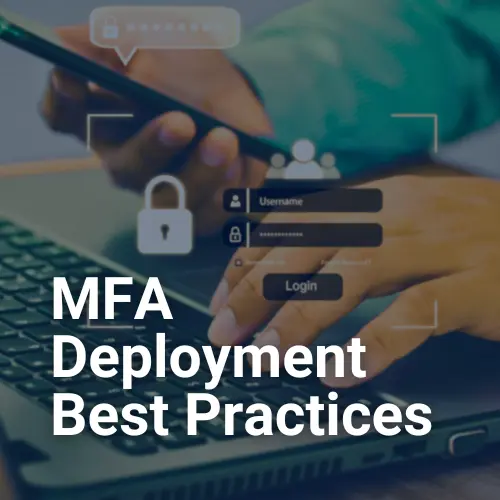The Challenge of Cyber Fatigue in K-12
The digital transformation of K-12 education has revolutionized teaching and learning, enabling enhanced opportunities for students and streamlining administrative processes. However, this shift has also introduced new cybersecurity challenges. IT directors, IT teams, and Data Protection Officers (DPOs) in schools face an unrelenting barrage of cyber threats, ranging from rudimentary phishing attacks to advanced persistent threats. The high stakes of protecting sensitive student and staff data, combined with resource constraints, often lead to cyber fatigue—a state of burnout that compromises security effectiveness.
This guide explores the challenges of cyber fatigue in K-12 education, actionable strategies to address it, and how strategic vendor partnerships can help schools focus on what truly matters: fostering a secure and enriching environment for students and educators.
Understanding Cyber Fatigue in the K-12 Education Sector
The concept of cyber fatigue is particularly relevant in the K-12 education sector, where IT teams and DPOs often operate under immense pressure. Unlike other industries, schools must manage unique challenges, such as safeguarding young learners’ sensitive data, navigating strict compliance requirements, and maintaining secure networks in environments that increasingly rely on connected devices and cloud-based solutions.
Amid these demands, the relentless pace of emerging threats and limited resources can push even the most dedicated professionals to their limits. This growing strain underscores the importance of understanding cyber fatigue—not just as a personal challenge faced by IT personnel but as a systemic issue that can impact the overall cybersecurity posture of an entire school district.
To combat this, it’s crucial to first define what cyber fatigue is and recognize the signs that it’s taking hold within your organization.
What is Cyber Fatigue?
Cyber fatigue occurs when IT professionals are overwhelmed by continuous exposure to cybersecurity threats and responsibilities. This condition is characterized by:
- Overload: Feeling overwhelmed by the volume and complexity of cyber threats.
- Decreased Vigilance: Lapses in security practices due to exhaustion.
- Reduced Morale: Lower productivity and engagement among IT teams.
Unique Cybersecurity Challenges in K-12 Environments
The K-12 sector faces specific factors that exacerbate cyber fatigue:
- Budget Constraints: Limited financial resources make it challenging to invest in advanced cybersecurity tools or expand IT teams.
- Legacy Systems: Outdated technology often coexists with newer infrastructure, creating vulnerabilities and increasing maintenance workloads.
- Balancing Security with Accessibility: Schools must ensure robust security while maintaining open networks for students, teachers, and administrators.
- Rising Threats: Cybercriminals target schools with increasingly sophisticated cyber attacks, exploiting their resource limitations.
The Risks of Cyber Fatigue in K-12 Education
Cyber fatigue can have severe consequences in the K-12 context, where resources are already stretched thin. Key risks include:
- Slower Response Times: Fatigued IT teams may take longer to detect and respond to threats, leaving systems exposed.
- Security Oversights: Exhaustion increases the likelihood of misconfigurations, unpatched vulnerabilities, and errors.
- Reactive Decision-Making: A lack of proactive planning leads to disjointed and ineffective cybersecurity measures.
The implications of these risks are significant. A security breach not only disrupts learning and erodes trust among parents, students, and staff but can lead to devastating financial losses and legal consequences. Addressing cyber fatigue is essential to maintaining a secure and resilient educational environment. The good news is that there are strategies to help you regain control and focus.
Practical Strategies to Combat Cyber Fatigue
Prioritize Risk Management
Identify and focus on addressing the most critical vulnerabilities. Regular risk assessments help IT teams allocate resources effectively and concentrate on high-impact areas.
Automate Repetitive Tasks
Leverage automation to streamline routine processes like patch management, threat detection, and incident reporting. Automation reduces the manual workload, allowing teams to focus on strategic initiatives.
Adopt a Cybersecurity Framework
Implement structured frameworks like NIST or CIS Controls to guide your cybersecurity efforts. These frameworks offer step-by-step approaches for enhancing security posture and tracking progress over time.
Foster a Cybersecurity Culture
Engage staff, students, and administrators in ongoing cybersecurity awareness programs. A collective commitment to security helps distribute responsibility and reduces the burden on IT teams.
Dedicate Time for Strategic Planning
Set aside regular time to review and update your cybersecurity strategy. A proactive approach ensures your efforts remain aligned with emerging threats and organizational goals.
The Role of Vendor Partnerships in Reducing Cyber Fatigue
Strategic vendor partnerships can be a game-changer for K-12 schools grappling with cyber fatigue. Here’s how these partnerships make a difference:
Access to Expertise
Experienced cybersecurity vendors bring specialized knowledge and stay abreast of the latest threats and technologies, enabling your school to benefit from cutting-edge solutions without requiring in-house expertise.
Enhanced Capacity
Vendors augment your IT team’s capabilities, helping manage workloads and fill gaps in expertise. This collaboration ensures your team isn’t overextended.
Unified Security Strategies
By aligning with your existing cybersecurity framework, vendors provide cohesive and effective solutions tailored to your specific needs.
Responsive Technical Support
Some vendors offer hands-on support for deploying new tools, monitoring threats, and responding to incidents. Their assistance ensures timely and effective resolutions.
Imagine working with a partner who understands the unique challenges of the K-12 environment and actively supports your goals. This collaborative approach can significantly alleviate cyber fatigue.
Stay Focused on What Matters Most
Your primary goal is to provide a secure, seamless educational experience for your students and staff. By implementing practical strategies and partnering with a trusted cybersecurity provider, you can reduce the burden of cyber fatigue and refocus on what truly matters.
At M.A. Polce, we specialize in helping K-12 institutions overcome cybersecurity challenges. Our team of experts is here to augment your efforts, coordinate your cybersecurity strategy, and provide the support you need to succeed. Let’s work together to reduce your cyber fatigue and strengthen your security posture.
Ready to Take the Next Step?
Speak with us today to explore how we can help you combat cyber fatigue and build a stronger cybersecurity strategy. Schedule a consultation or download our guide, “Reducing Cyber Fatigue in K-12 Schools,” to get started.
» Click Here to Download the “Reducing Cyber Fatigue in K-12 Education” eBook.

